Exploring Stephan's Quintet: The Stars' Dance Revealed
Written on
Chapter 1: Introduction to Stephan's Quintet
The recent unveiling of images from the James Webb Space Telescope (JWST) has spotlighted a fascinating group of galaxies known as Stephan’s Quintet. This group could easily be likened to the “popular crowd” in a school setting, especially with its newfound fame from these images.
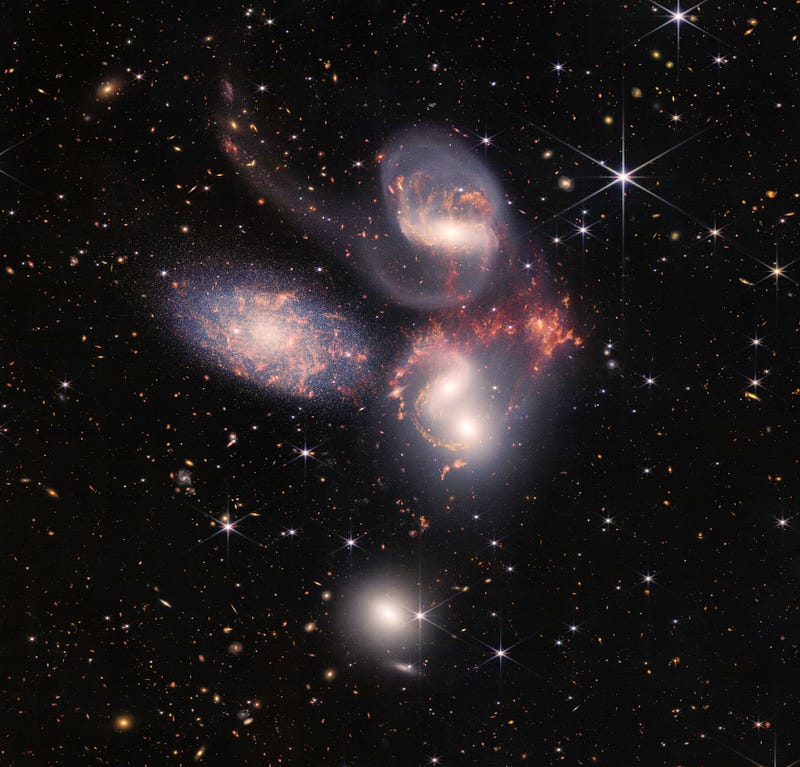
This image showcases the mesmerizing Stephan's Quintet (Source: NASA). Within this ensemble, one galaxy stands apart from the rest. The spiral galaxy on the left, designated NGC7320, lies about 39 million light-years from our planet, while the other four galaxies are located 290 million light-years away. Thus, despite their visual proximity, only four of these galaxies are truly interacting.
It's a gentle reminder that appearances can be deceptive — just because a group seems close, they might not actually be so.
The JWST has successfully distinguished individual stars within this galaxy, an impressive feat.
Two of the galaxies, identified as NGC 7318A and NGC 7318B, are in the process of merging. One could describe their relationship as tumultuous yet affectionate. Although they may seem to be tearing each other apart, they are destined to become one over time, much like our Milky Way's eventual merger with the Andromeda galaxy in billions of years.
In the upper portion of the image, we see NGC7319, which harbors a supermassive black hole at its center, categorizing it as an active galaxy. The JWST has further resolved the gas composition surrounding this black hole, illustrated in the next image.
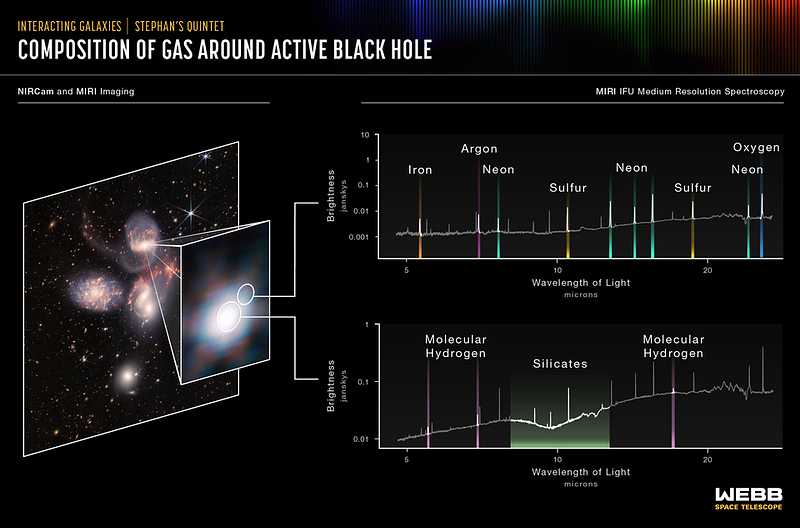
Additionally, at the bottom of the image, an elliptical galaxy can be observed. These galaxies are typically aged and have exhausted their gas reserves, ceasing to form new stars.
Section 1.1: Personal Observations with the Nordic Optical Telescope
A few years ago, I had the opportunity to observe the same region of the sky using the Nordic Optical Telescope (NOT) located in the Canary Islands. The following composite image juxtaposes my observations with those from the JWST.
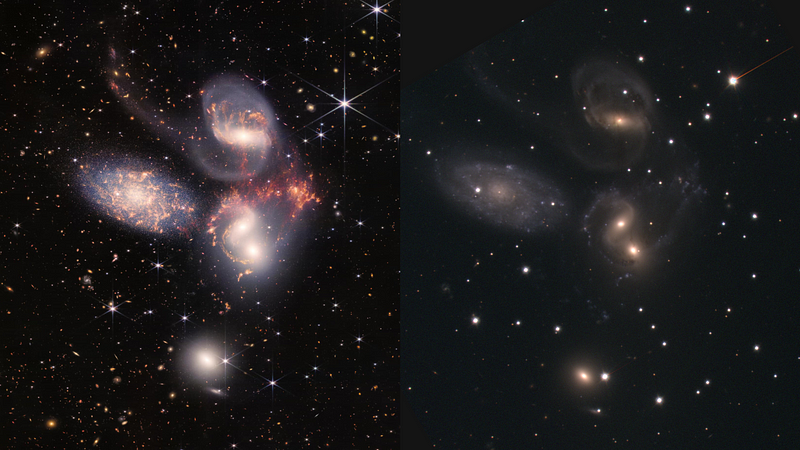
While the Hubble Space Telescope produced a sharper image of Stephan's Quintet than my observations with NOT, the comparison is intriguing. The added bonus is the multitude of distant galaxies that are visible, showcasing the enhanced capabilities of the JWST compared to its predecessors. The JWST opens up a new realm of understanding regarding our vast and distant universe!
Section 1.2: The Depths of Space Explored
The Deep Field images captured by JWST allow us to glimpse an area of the sky comparable to holding a grain of sand at arm's length. These images reveal a wealth of cosmic wonders behind that small speck.
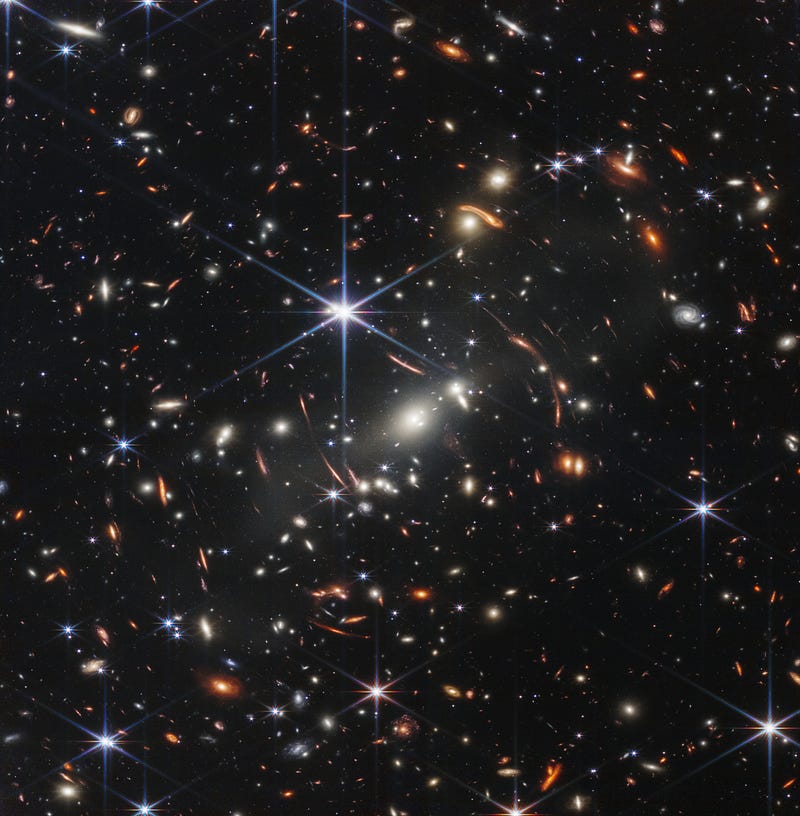
Section 1.3: A Glimpse at Exoplanets
The JWST has already begun analyzing the atmospheric composition of a "Hot Jupiter," a massive gas planet closely orbiting its star.
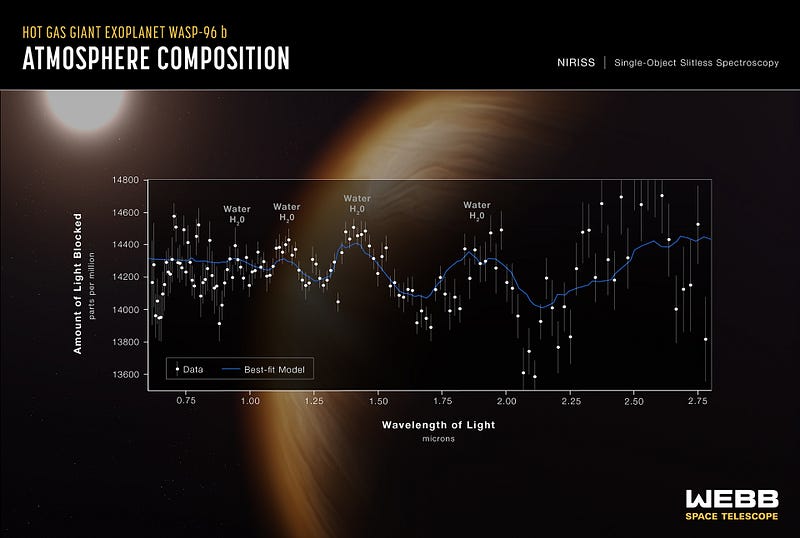
This initial study detected water vapor in the atmosphere of WASP-96b. However, the real excitement lies in the prospect of examining the atmospheres of Earth-like exoplanets. NASA aims to focus on the TRAPPIST-1 system, which is located 39 light-years from Earth and contains seven Earth-sized planets, four of which lie within the habitable zone. This zone suggests the potential for liquid water, contingent on atmospheric and planetary conditions — a topic where the JWST can contribute significantly.
The search for life within our galaxy takes a significant leap forward with these advancements.
Chapter 2: Engaging with the Cosmos
In this video titled "See the sky's best galaxy groups: This Week in Astronomy with Dave Eicher 09/18/2023," viewers can explore the fascinating galaxy groups that make up our universe.
The next video, "HOW TO OBSERVE STEPHAN'S QUINTET GALAXY GROUP in PEGASUS," provides practical tips on observing this stunning galaxy cluster.